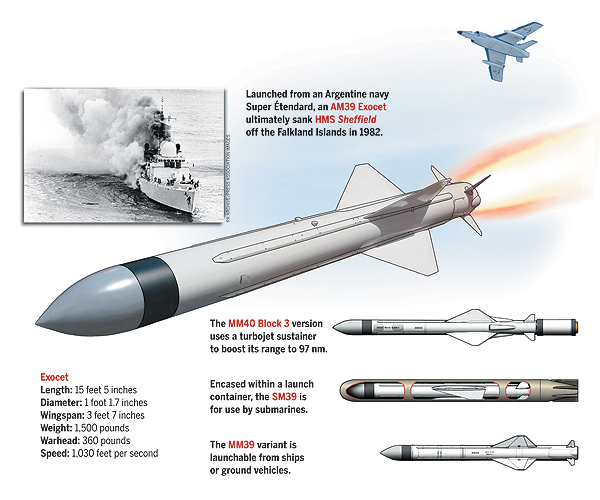In 1967 Nord Aviation, a French precursor of the European missile manufacturer MBDA, began development of a ship-launched guided missile. Perfected in 1974, the missile entered French naval service in 1979 as the Exocet (French for “flying fish”). Using a solid-propellant rocket with a range of 38 nautical miles, the weapon saw deployment as the surface-launched MM38, the air-launched AM38 and AM39, and the submarine-launched SM39. The newer surface-launched MM40 version has a turbojet engine that extends its range to 97 nautical miles. Fitted with inertial and active radar, the Exocet skims just a few yards above the ocean’s surface, making it difficult to detect on radar.
On May 4, 1982, during the Falklands War, an Exocet launched from an Argentine navy Dassault-Breguet Super Étendard fighter struck the British destroyer HMS Sheffield, failing to explode but causing massive fires that ultimately sank the warship. Three weeks later two Super Étendard–launched Exocets hit the British container ship Atlantic Conveyor, which also sank. The Argentines missed the light aircraft carrier HMS Invincible on May 30, but a land-launched Exocet damaged the destroyer HMS Glamorgan on June 12, shortly before the British retook the Falkland Islands.
During its eight-year (1980–88) clash with Iran, Iraq launched 200 Exocets at enemy-flagged tankers and other vessels, with varying success. But in the Persian Gulf on May 17, 1987, an Iraqi Dassault Mirage F1, for reasons unexplained—Iraq was not at war with the United States—launched two Exocets that hit the frigate USS Stark, whose surviving crew managed to save the badly damaged warship.





